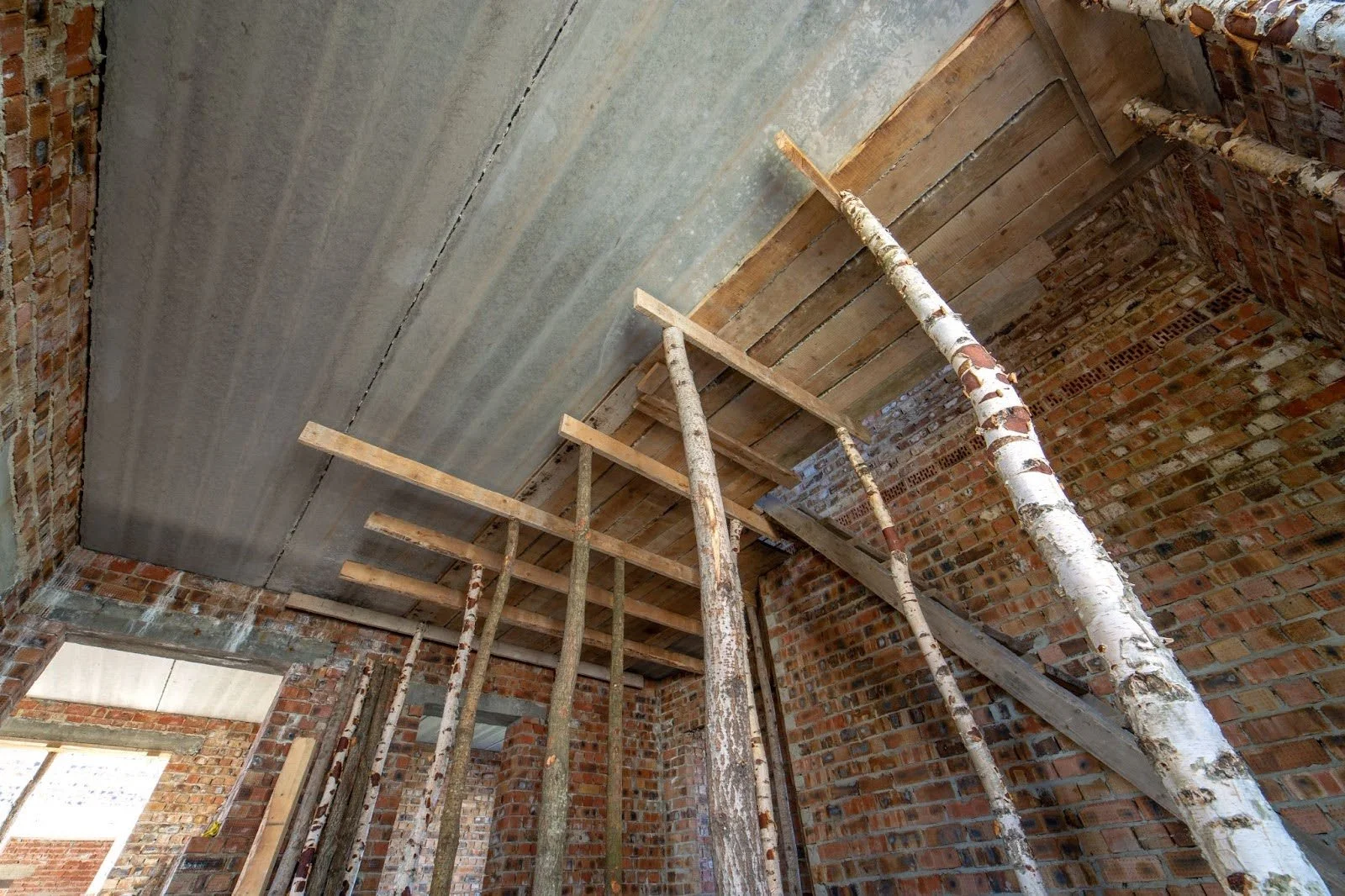Green Features to Consider for Your Commercial Building
Green Features to Consider for Your Commercial Building
“Going green” has become a common objective in today’s construction industry.
More emphasis is being placed on smart building systems that are less wasteful and more energy-efficient, sustainable, and cost-effective. The benefits of green buildings are obvious.
Which green features are available for commercial construction? Keep reading to find out.
1. Solar Panels
The use of renewable energy sources has grown globally as an attempt to reduce the depletion of fossil fuels.
Hydropower, wind, and solar are the three most popular forms of renewable energy.
Solar photovoltaic panels allow buildings to use the sun's power. They are one of the most efficient green features for a building project, reducing both energy costs and greenhouse gas emissions.
There are several different types of solar panels on the market:
Monocrystalline Solar Panels
This type of solar panel has a high-efficiency output and can sustain higher temperatures than most other models. They also have a smooth look and a long lifespan.
However, monocrystalline panels do come with some drawbacks: they are among the most expensive and have the least sustainable manufacturing.
Polycrystalline Solar Panels
On the other hand, polycrystalline solar panels provide a lower performance, but more are built with a more efficient manufacturing process.
Also, they are less heat-tolerant and require more panels to produce a higher output.
Thin-Film Solar Panels
This option provides flexible panels that fit over any surface. The flexibility and light weight of thin-film solar units make them suitable for more types of roofs. The output differs depending on the panel's material.
PERC Panels
These high-quality panels have the highest output of all solar panels on the market. They are built by using a monocrystalline panel and then adding a passivation layer to the back.
PERC panels can be used in any weather, even where other solar panels are useless.
Solar Water Heater
Heating water can be a huge power draw. This system uses solar panels to heat water that passes through, saving the energy the water heater would otherwise use.
These panels are smaller and reserved to offset the cost of the water heater only.
2. Water Recycling Systems
Water consumption is another factor that comes into play when considering the conservation of our natural resources. There are several techniques used to improve the water efficiency of new construction.
Stormwater Retention
This method of water recycling consists of a gutter system that collects and stores rainwater. It can also be known as rainwater harvesting.
This collected water can be filtered and used again.
Since the stormwater is collected before it reaches the soil, this system also reduces the load handled by the sewer and stormwater drainage systems.
Greywater Recycling
The term “greywater” refers to water that has already passed through fixtures (except toilets). You can reuse greywater to flush toilets or water indoor plants and outdoor landscaping.
Water Conservation
Instead of finding more water sources, conservation is another way to reduce your water use in the first place.
Low-flow fixtures are a popular option to conserve water. Water leak detectors can be installed in pipes to find plumbing leaks early, allowing repairs before much water is wasted.
3. Energy-Efficient Lighting
Although lighting may not seem like a significant energy consumer, finding energy savings is always beneficial. There are many ways to improve lighting efficiency.
LED Lighting
The easiest way to reduce the amount of energy your building uses to light its rooms is to use lightbulbs that use less electricity. LED bulbs that are Energy Star-certified will use up to 90% less energy to power.
Dimming Lights
Installing automatic dimming lights is another way to reduce your lighting energy use. A daylight sensing system that dims lights when the room is naturally lit can help reduce power consumption.
Movement-Sensor Lighting
Motion sensors that turn the lights on when someone enters the room will automatically turn off after a period of no detected movement.
4. Sustainable Materials
Using sustainable building materials is a high priority in green building design. Sustainable building construction has the lowest environmental impact.
Several attributes can make a building material more sustainable.
An eco-friendly or biodegradable material ranks high on the sustainability meter. Materials that make this list include:
Bamboo
Cork
Straw
Soil
Mycelium
Of course, when constructing a commercial building, you must ensure your material is sustainable and strong. Steel is one of the most popular sustainable materials because it is strong and can be infinitely recycled. (Read more about how sustainable steel is here.)
Using recycled or recyclable materials is a great way to implement green building methods because it keeps them out of the landfill.
When considering a material’s sustainability, you also want to look into its sourcing and manufacturing processes.
For example, laminated timber is considered a sustainable building material because its production leaves a smaller carbon footprint than that of many other structural support materials.
Due to their high performance and durability, the most sustainable materials will also have a long life cycle, requiring no repair or replacement for decades.
Concrete is one of the most durable sustainable materials available for commercial projects. Applying the right methods can make concrete even more environmentally friendly. (Read how to do that here.)
5. Biophilic Design Elements
The indoor environment of a building can greatly affect the well-being of its inhabitants.
Although most designers add biophilic design elements more for the psychological and physiological benefits of the occupants, they are also considered “green” building methods.
First and foremost, using natural materials in interior design can make the space seem less clinical and more inviting. Most natural materials are also sustainable choices.
Additionally, incorporating specific plant life in your decor can help improve the quality of your indoor environment.
6. Natural Lighting and Ventilation
Nature can help to reduce the amount of electricity necessary to light and cool a commercial space.
Installing skylights offers at least some illumination without electricity. The only drawback is that without proper placement, they can increase the internal temperature through the greenhouse effect.
Skylights can even be vented for natural airflow. Exhaust fans and ridge vents allow for natural ventilation without the need for electricity.
With the right placement, you can achieve cross ventilation from opening windows, which can be immensely helpful in cooling even large indoor areas.
Natural ventilation is also great for indoor environmental quality. We’ve already emphasized how poor air quality can be inside a building, making natural ventilation an even better option.
Of course, another great benefit of using natural ventilation methods is reducing the energy consumption of the HVAC system.
7. Smart Building Automation
Building management systems (BMS), or building automation systems (BAS), are intricate processes that use various sensors to monitor and control building systems such as HVAC, security, and lighting.
These sensors collect data such as internal temperature, movement, and air quality and direct them to the BMS or BAS, where the IT system determines if any function needs to be adjusted.
For example, these systems may be able to:
Open or close natural ventilation methods
Turn off or dim lights
Switch on a camera to document a detected movement
It could even close doors and de-escalate a safety hazard, such as a gas leak or fire, without human intervention.
These smart building systems reduce unnecessary energy usage and lower the operational costs of commercial space. They can also be programmed to meet the needs of the user.
8. Green Roofing
Green roofs have a system that supports plant life on the roof's surface.
Various levels of green roofing are available. What will work for one project may not be the same as another. Viable green roofing depends on the structural load, roof pitch, and budget.
Intensive green roofs are fully functional roofs that can be walked on and contain gardens and trees. These roofs provide both energy savings and an aesthetically pleasing area for the occupants to visit.
Intensive green roofs must be relatively flat and require a stronger support system to maintain the heavier loads of deep soil and numerous people walking throughout.
Green roofs for purely energy-saving purposes can either be semi-intensive, which allows bushes and shrubs to be planted, or extensive, which will only support a thick layer of moss.
Semi-intensive green roofs can be planted on a roof with a slight slope, while extensive green roofs can be planted on roofs with a high slope.
Green roofs help insulate buildings to preserve winter heat or summer cooling. They also protect roofs from UV ray damage, which can weaken their structural integrity.
Green roofing also aids in stormwater management because the plants absorb much of the rainwater.
9. Advanced Heating and Cooling Systems
HVAC is generally the biggest energy user of any building, making it the most expensive part of building maintenance.
It is also the area of building management that produces the largest amount of emissions and is one of the most significant contributors to a building's carbon footprint.
That is why many building owners have prioritized finding a better way to control a building’s internal temperature.
From using an on-site power source to recycling energy already being used, a project owner can take advantage of several alternative heating and cooling options.
Cogeneration
Also known as CHP, or combined heat and power, cogeneration uses the heat generated from the power generator to heat the building.
Of course, this heat may not always be sufficient to raise the temperature to a comfortable level, but it can greatly reduce the energy needed by the heating system.
Fuel Cells
Fuel cell technology uses a chemical reaction between a fuel, such as hydrogen and air.
This chemical reaction produces heat and electricity simultaneously. It is considered a clean method of energy production, producing near zero emissions.
Fuel cells can also store energy. This energy can then be a backup source when power is interrupted.
Chiller Plants
Chiller plants are the most efficient air conditioning units for large buildings with many smaller temperature control zones.
Combined with hydronic pumps and fans, chiller plants can cool an entire building while allowing occupants to control the temperature in their immediate area.
Chiller plants can be air-cooled or water-cooled. However, water-cooled chiller plants are much more energy efficient for buildings with a larger cooling load.
Geothermal Heat Pumps
This alternative to an HVAC system uses underground piping to either draw heat into the building or remove it from the building and into the ground.
While HVAC systems use the outside air to control the temperature inside, geothermal heat pumps utilize the natural temperature of the soil beneath the surface to control the building's temperature.
The heat produced by the inside of the earth is a natural, clean, and renewable energy source, making geothermal heat pumps a very “green” choice.
Recap
Applying green building standards is important for a commercial building, as it benefits the environment, reduces energy consumption, and provides operating cost savings.
What’s more, achieving LEED (leadership in energy and environmental design) certification for your construction project gains respect for building owners.
Contact ZP Architects & Engineers today to discuss the features you want to incorporate into your commercial building.







